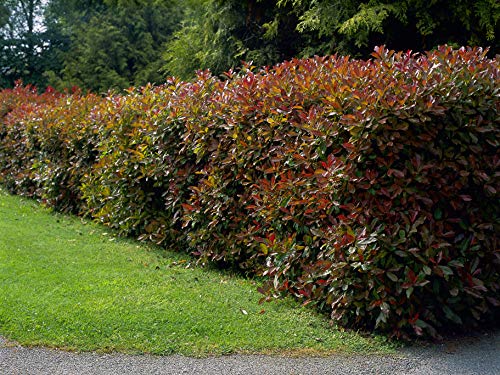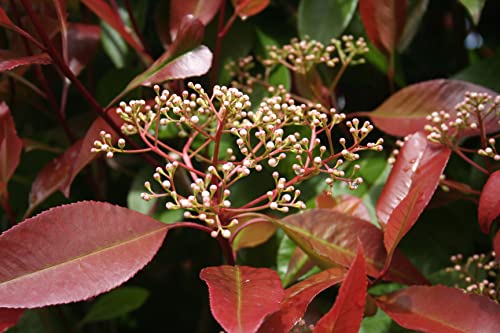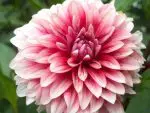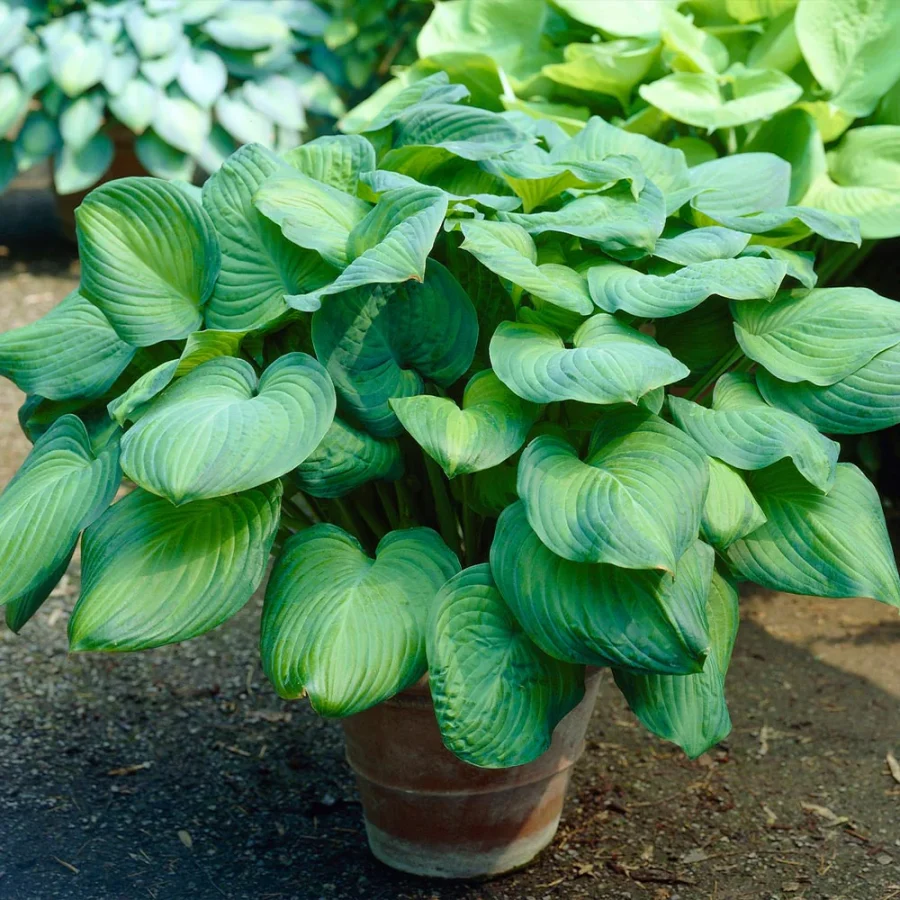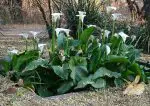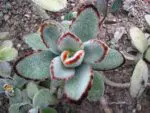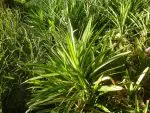This post contains affiliate links. If you buy something from one of our links we may earn a commission. Thanks
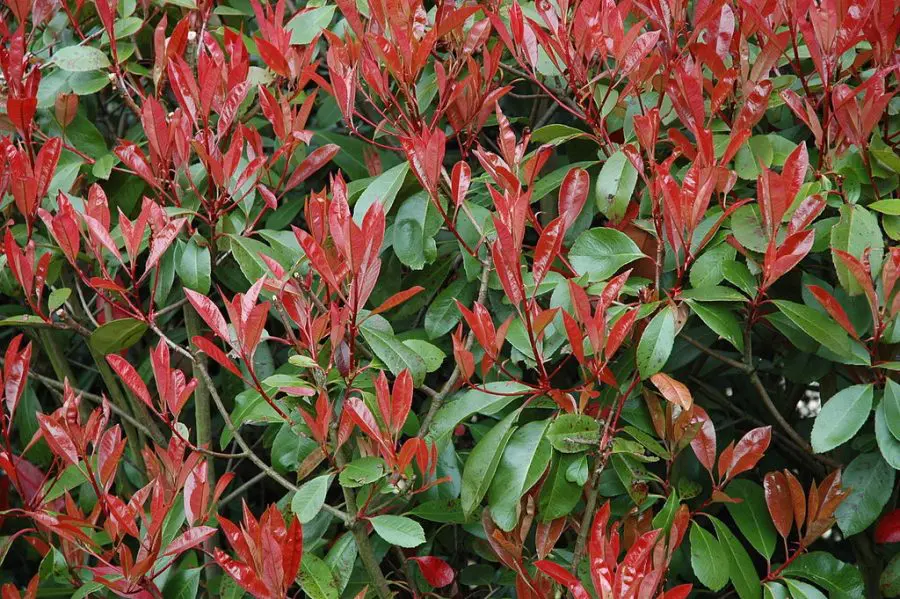
Discover the secrets to growing a lush and thriving Red Tip Photinia Privacy Hedge in our comprehensive guide, covering care tips, planting, propagation, and more.
To grow a Red Tip Photinia privacy hedge, plant the shrubs 4-6 feet apart in well-draining soil, in an area with full sun to partial shade. Water regularly until established, then reduce watering. Fertilize in spring and prune as needed to maintain shape and encourage vibrant red foliage.
Welcome to the world of Red Tip Photinia privacy hedges!
These vibrant and versatile plants can transform your garden into a stunning sanctuary.
In this guide, we’ll explore how to grow and maintain a gorgeous Red Tip Photinia hedge, so you can enjoy a lush, eye-catching barrier that provides both beauty and privacy.
Let’s dive in and turn your garden into a photinia paradise!
Introduction: Red Tip Photinia Privacy Hedge Care
Are you ready to learn about Red Tip Photinia Privacy Hedge Care?
In this all-inclusive guide, we’ll cover everything you need to know about cultivating and maintaining these beautiful evergreen shrubs.
From various types and growth rates to essential care tips like light, soil, and water requirements, we’ve got you covered.
Join us on this exciting journey as we delve into the world of Red Tip Photinias, helping you create a stunning and private green space in your own backyard!
Benefits of using Red Tip Photinia as a privacy hedge
Why should you consider Red Tip Photinia for your privacy hedge?
There are numerous advantages to choosing this stunning plant. First and foremost, it’s an evergreen, meaning it will provide year-round privacy and a natural barrier for your outdoor space.
Additionally, the Red Tip Photinia’s striking new foliage, with its vibrant red color, adds an aesthetic appeal that sets it apart from other hedge options.
Plus, as a fast-growing plant, you won’t have to wait long for your hedge to reach its desired height.
Basic Care Requirements In A Nutshell
Taking care of your Red Tip Photinia privacy hedge might seem daunting at first, but with some simple guidelines, you’ll be well on your way to a thriving, healthy hedge. Here are the essentials:
• Light: Red Tip Photinias enjoy full sun to partial shade, so make sure to plant them in an area with adequate sunlight.
• Soil: Well-drained, loamy soil with a slightly acidic to neutral pH is ideal for these plants. If your soil is heavy clay, consider amending it with compost before planting.
• Water: Ensure your photinias receive about an inch of water weekly, especially in the first two years. Water at the base of the plant and avoid getting the leaves wet to prevent fungal diseases.
• Fertilizer: Unless your soil is particularly nutrient-deficient, Red Tip Photinias typically don’t require much fertilization. If necessary, use a slow-release organic fertilizer in early spring.
• Pruning: To maintain a healthy hedge and promote good air circulation, prune your photinias at least once a year, preferably in the winter.
By following these basic care guidelines, you’ll be well on your way to a flourishing Red Tip Photinia privacy hedge that is both functional and visually stunning.
Photinia Varieties
In this section, we’ll explore the different types of Red Tip Photinia that you can choose from when planning your privacy hedge.
Each variety has its own unique characteristics, making it essential to pick the one that best suits your preferences and gardening needs.
From the popular Red Robin cultivar to the more compact Little Red Robin, there’s a Red Tip Photinia for everyone!
So, let’s dive in and discover the perfect variety for your garden.
Introducing Red Tip Photinia (Photinia × fraseri)
Red Tip Photinia, or Photinia × fraseri, is a large evergreen shrub or small tree known for its vibrant red new growth, which adds a pop of color to any garden.
It can grow up to 15 feet tall, making it an excellent choice for a privacy hedge.
Its dense foliage provides a great barrier against noise and wind, while its white flowers in spring add a touch of elegance.
Other Photina Varieties
Chinese Photinia (Photinia serrulata)
Chinese photinia, also known as Photinia serrulata, is a large evergreen shrub native to China.
It typically grows between 10 and 20 feet tall, with a similar spread. The leaves are dark green, leathery, and glossy, with serrated edges.
New leaves emerge with a bronze or reddish tint, which matures to deep green.
Chinese photinia produces clusters of small, fragrant white flowers in spring, followed by red berries that attract birds. This species is popular as a specimen plant or as part of a mixed border.
Japanese Photinia (Photinia glabra)
Japanese photinia, or Photinia glabra, is native to Japan and other parts of East Asia.
It’s an evergreen shrub that grows between 6 and 15 feet tall, with a similar width.
The young leaves are smooth, glossy, and dark green, with new foliage emerging in a bright red color, gradually fading to deep green as it matures.
In spring, Japanese photinia produces small, white flowers in clusters, followed by red berries.
It is well-suited for use as a hedge, screen, or specimen plant, and can also be used in mixed borders for year-round interest.
Comparing Red Tip Photinia to Other Common Privacy Hedge Plants
When considering a privacy hedge, it’s important to compare Red Tip Photinia to other popular options to ensure you make the best choice for your garden. Here’s a quick comparison with other common privacy hedge plants:
Boxwood (Buxus spp.): Boxwood is a slow-growing evergreen shrub with small, dense leaves. While it is excellent for creating formal hedges, it lacks the colorful foliage of Red Tip Photinia.
Arborvitae (Thuja spp.): Arborvitae is a fast-growing conifer that provides year-round privacy. However, it doesn’t have the striking red foliage that makes Red Tip Photinia stand out.
Privet (Ligustrum spp.): Privet is a deciduous or evergreen shrub with dense, dark green foliage. While it grows quickly, it doesn’t have the colorful new growth of Red Tip Photinia.
Leyland Cypress (Cupressocyparis leylandii): Leyland cypress is a fast-growing conifer that can reach great heights. While it provides excellent privacy, it lacks the vibrant red foliage that gives Red Tip Photinia its unique appeal.
Holly (Ilex spp.): Holly is an evergreen shrub with glossy, dark green leaves and bright red berries. Although it offers year-round interest, it doesn’t have the eye-catching red new growth that Red Tip Photinia boasts.
In summary, while each of these privacy hedge plants has its benefits, Red Tip Photinia stands out for its stunning red new growth, dense foliage, and fast growth rate.
It’s an excellent choice for those who want to add a pop of color and visual interest to their garden while maintaining privacy.
Growth rate and height
If you’re considering adding Red Tip Photinia to your garden as a privacy hedge, you’re probably curious about its growth rate and height.
In this section, we’ll dive into the details of how quickly this vibrant plant grows and how tall it can get.
This will help you plan your garden and understand how long it might take for your Red Tip Photinia hedge to reach the desired height.
So, let’s explore the exciting world of Red Tip Photinia’s growth and what it means for your landscape!
Typical Growth Rate
Red Tip Photinia is known for its relatively fast growth rate, which is one of the reasons it’s popular as a privacy hedge.
On average, a healthy plant gains 1 to 3 feet in height per year, making it a quick solution for those looking to add some privacy to their outdoor spaces.
Maximum Height and Width
At maturity, Red Tip Photinia can reach an impressive height of 10 to 15 feet tall, with a similar spread in width.
This large evergreen shrub provides excellent coverage, making it perfect for making great hedges fast and creating a natural barrier between your property and the outside world.
Factors Affecting Growth Rate
Several factors can impact the growth rate of your Red Tip Photinia.
To ensure optimal growth, make sure to provide the plant with full sun or partial shade, well-drained soil, and adequate water.
Good air circulation is essential in preventing fungal diseases that can hinder growth.
Additionally, the use of a slow-release organic fertilizer in the early spring can help promote healthy growth, especially if the soil is lacking in nutrients.
By meeting these requirements, your Red Tip Photinia should thrive and grow at a steady pace.
Photinia Light Requirements
As a versatile and adaptable plant, Red Tip Photinia can thrive in various lighting conditions, which makes it an attractive choice for many gardeners.
In this section, we’ll delve into the different light requirements for Red Tip Photinia, covering everything from full sun to partial shade, and even its ability to tolerate full shade.
Let’s explore how to make the most of this stunning shrub by providing the optimal light conditions for its growth and vibrant foliage.
Ideal Sunlight Conditions for Red Tip Photinia
Red Tip Photinia is an adaptable plant when it comes to light exposure.
Ideally, the shrub thrives in full sun or partial shade, which allows for the most vibrant red foliage and optimal growth.
In cooler climate zones, it prefers full sun, while in hot climates, it benefits from some afternoon shade to protect it from scorching heat.
Consequences of Too Much or Too Little Light
While Red Tip Photinia can tolerate a range of light conditions, it’s essential to be mindful of the effects of too much or too little light.
When the shrub receives excessive sunlight, especially in hot climates, its leaves may scorch or become discolored, affecting its overall health and appearance.
On the other hand, if the plant doesn’t get enough light, its growth may become leggy and sparse, and the vibrant red new growth may be less pronounced.
Ensuring the right balance of light exposure will keep your Red Tip Photinia healthy and looking its best.
Photinia Soil Type
In this section, we’ll dive into the world of soil and how it affects the growth and health of your Red Tip Photinia privacy hedge.
It’s important to know the type of soil your plant prefers, as well as how to amend and maintain it for optimal growth.
From well-drained soil to different soil types, we’ll cover everything you need to know to create the perfect environment for your Red Tip Photinia to thrive!
Preferred Soil Type for Red Tip Photinia
When it comes to the preferred soil type for Red Tip Photinia, loamy and well-drained soil is the way to go.
This type of soil provides the right balance of moisture, nutrients, and air circulation, allowing the roots to grow strong and healthy.
Soil pH and Nutrient Requirements
Red Tip Photinia thrives in slightly acidic to neutral soil, with a pH range of 6.0 to 7.5.
It’s essential to monitor the soil pH and nutrient levels to ensure your plant gets the nutrients it needs.
If the soil is lacking, consider using a slow-release organic fertilizer in early spring to support the new growth of your Red Tip Photinia.
Drainage Considerations
Good drainage is crucial for maintaining a healthy Red Tip Photinia.
Excess water can lead to root rot and other problems, so it’s essential to ensure your plant’s soil has adequate drainage.
If you have heavy clay soil, consider amending it with 50% coco coir or compost before planting to improve its drainage capabilities and create a healthier environment for your Red Tip Photinia.
Red Tip Photinia Watering Needs
Diving into the world of Red Tip Photinia care, let’s talk about water!
As with any plant, ensuring proper hydration is essential for a thriving, healthy Red Tip Photinia privacy hedge.
In this section, we’ll explore the watering needs of your photinia, how to strike the perfect balance between too much and too little water, and some tips to make your watering routine as efficient as possible.
So, let’s quench your plant’s thirst and dive right in!
Finding the Right Watering Balance
Watering frequency and amounts are crucial when it comes to keeping your Red Tip Photinia healthy and happy.
Generally, these plants need a deep watering once a week during their first year, while established shrubs can go for two weeks between waterings.
However, this can vary depending on your local climate and weather conditions.
Be sure to provide enough water to moisten the soil to a depth of 12-18 inches, encouraging deep root growth.
Identifying Over- or Under-Watering Issues
Keeping an eye out for signs of over- or under-watering can prevent potential damage to your Red Tip Photinia.
If you notice yellowing leaves or wilting despite regular watering, it might be a sign of over-watering.
On the other hand, under-watered plants often display curled or brown leaves and slowed growth.
Monitoring your plant’s health and adjusting your watering routine accordingly can help you maintain the perfect balance for your Red Tip Photinia privacy hedge.
Photinia Fertilizer
As we dive into the world of fertilizers, you’ll discover how giving your Red Tip Photinia privacy hedge the right nutrients can work wonders for its growth and overall health.
In this section, we’ll explore the best fertilizer types, application methods, and timing to ensure your vibrant hedge thrives and maintains its eye-catching appeal.
Let’s give your photinia the TLC it deserves!
Timing and Application: The Key to Fertilizing Success
Knowing when and how to fertilize your Red Tip Photinia privacy hedge can make a significant difference in its growth and overall health.
Generally, it’s best to apply fertilizer in early spring, just before new growth begins.
Use a slow-release granular fertilizer, spreading it evenly around the base of the plant and watering it in well to help the nutrients reach the root zone.
Fertilizer Choices: Nutrients for a Thriving Hedge
Selecting the right type of fertilizer for your Red Tip Photinia is essential for promoting lush growth and vibrant foliage.
A balanced, slow-release fertilizer with an N-P-K ratio of 10-10-10 or 14-14-14 will provide your hedge with the necessary nutrients.
Nitrogen (N) promotes healthy foliage, phosphorus (P) supports strong root development, and potassium (K) enhances overall plant health and disease resistance.
By choosing the right fertilizer, you’ll give your photinia privacy hedge the best chance to thrive!
The soil in my part of Western Washington is extremely rich and my Photina was putting on 3 feet of growth a year without any fertilizer at all.
But your soil may still need some fertilizer so monitor your growth.
Temperature and Humidity
As you dive into the world of Red Tip Photinia privacy hedges, understanding the temperature and humidity preferences of this gorgeous plant will help you keep it happy and healthy.
In this section, we’ll explore how these environmental factors impact your photinia and discuss ways to protect your hedge from extreme conditions.
So, let’s get started and learn how to create the perfect environment for your vibrant Red Tip Photinia!
Ideal Temperature Range for Red Tip Photinia
Red Tip Photinia thrives in USDA hardiness zones 7 to 9, where it enjoys a moderate climate.
The ideal temperature range for this plant is between 60°F and 75°F (15°C and 24°C).
However, it can tolerate temperatures as low as 0°F (-18°C) during winter and up to 90°F (32°C) during summer.
My area rarely sees these extremes but they do occasionally happen.
Keep your Red Tip Photinia privacy hedge healthy and it will weather these extremes without problems.
It’s crucial to provide adequate shade and water during periods of extreme heat to keep your photinia healthy.
Humidity and Drought Tolerance
Red Tip Photinia is relatively tolerant of varying humidity levels.
It can grow well in areas with high humidity, but adequate air circulation is essential to prevent fungal diseases.
On the other hand, this plant also has some drought tolerance once established.
During periods of low rainfall or drought, ensure you provide supplemental water to maintain healthy growth and prevent the plant from becoming stressed.
Planting And Spacing
Get ready to transform your landscape with the stunning Red Tip Photinia privacy hedge!
In this section, we’ll discuss planting techniques and spacing requirements to ensure your photinia plants grow lush and healthy and provide you with the privacy you desire.
With the right approach and some useful tips, you’ll soon be on your way to enjoying the vibrant beauty these plants bring to any yard or garden.
When to Plant Red Tip Photinia
To give your Red Tip Photinia the best start, plant it during early spring or late fall.
These cooler seasons allow the plant to establish its root system without the stress of extreme temperatures.
Early spring planting also coincides with the emergence of new growth, ensuring a vibrant display of red foliage.
Proper Spacing for Optimal Growth and Privacy
To ensure optimal growth and create a dense privacy hedge, space Red Tip Photinia plants about 6 to 10 feet apart.
This distance allows adequate air circulation, reducing the risk of fungal diseases while also promoting dense foliage growth.
For a staggered, two-row planting arrangement, space plants in a zigzag pattern, with each plant 4 to 6 feet from its neighbors.
This setup will provide a fuller hedge and greater privacy in a shorter amount of time.
Pruning Photinia
Pruning is an essential aspect of Red Tip Photinia care, and it can do wonders for the health and appearance of your privacy hedge.
In this section, we’ll delve into the best practices for pruning, keeping your Red Tip Photinia plants in tip-top shape.
You’ll learn how and when to trim, ensuring a lush, dense hedge that not only looks fabulous but also stays healthy and vibrant throughout the year.
Let’s get snipping!
Pruning Time and Frequency
Knowing when and how often to prune your Red Tip Photinia is crucial for maintaining a healthy and visually appealing hedge.
It’s best to prune in late winter or early spring, just before the new growth emerges.
This timing allows you to shape the plant and remove any dead or damaged branches.
Additionally, you may want to do some light pruning during the growing season to keep your hedge looking neat and tidy.
Techniques for Shape and Growth
To maintain your Red Tip Photinia’s shape and encourage growth, adopt these pruning techniques:
• Thinning: Remove select branches to improve air circulation and sunlight penetration. Thinning out the inner branches promotes healthy growth and helps prevent fungal diseases.
• Topping: Cut back the top of the plant to encourage lateral growth and achieve a fuller hedge. Be careful not to remove more than one-third of the plant’s height at once, as this could stress the plant.
• Shearing: For a more formal appearance, shear the outer growth of your Red Tip Photinia to maintain a neat, uniform shape.
This technique is ideal for shaping your privacy hedge, but be sure to also thin out the interior to prevent a dense outer shell with sparse growth inside.
Photinia Propagation
Are you eager to expand your Red Tip Photinia privacy hedge or share it with friends and family?
If so, you’re in luck! In this section, we’ll delve into the fascinating world of propagating Red Tip Photinia, offering tips and tricks to help you successfully multiply these stunning plants.
So, let’s dive in and discover how you can create new plants from your existing hedge!
Methods of Propagation: Cuttings and Layering
When it comes to propagating Red Tip Photinia, you have a couple of effective methods to choose from: stem cuttings and layering.
Both methods are relatively simple, but they do require some patience and attention to detail.
Tips for Successful Propagation
Stem Cuttings: Timing and Technique
The best time to take stem cuttings is in the early summer when the new growth has started to harden off.
Select healthy, semi-hardwood stems, and make a clean cut just below a leaf node.
Remove the leaves from the lower half of the cutting, and dip the cut end in rooting hormone to encourage root development.
Plant the cutting in well-draining soil like coco coir or a potting mix, and keep it moist and in a sheltered location.
With proper care, you should see roots forming within a few weeks.
Layering: Slow but Steady
Layering is another method to propagate Red Tip Photinia, and it involves encouraging roots to grow on a living stem while it’s still attached to the parent plant.
To do this, select a low-growing, flexible branch and make a small, upward-slanting cut about halfway through the stem.
Prop the cut open with a small piece of wood or a toothpick, then bury the wounded section of the stem in the soil, ensuring it is well-anchored.
As an alternate method, you can pack the wound with moist coco coir or peat moss and wrap it with plastic. You save the effort of bending and burying the branch.
Within several months, the buried section should develop roots.
Once the new plant has established a healthy root system, you can sever the connection to the parent plant and transplant it to a new location.
Honestly stem cuttings are the way to go if you want to propagate your Photina.
Growing From Seed
You can buy Red Tip Photinia Seeds On Amazon
In this section, we’ll dive into the lesser-known method of propagating Red Tip Photinia: growing from seed!
While this approach requires a bit more patience compared to other methods, it can be a rewarding and fulfilling process.
Get ready to learn about seed collection, stratification, sowing, and transplanting as we guide you through the steps of growing your very own Red Tip Photinia from seeds.
Sowing Seeds Indoors or Outdoors
When it comes to sowing Red Tip Photinia seeds, you have the option of starting them indoors or directly in the garden.
Starting seeds indoors allows you to control the environment and gives the seedlings a head start before transplanting.
On the other hand, sowing seeds outdoors can be more convenient and requires less maintenance.
Weigh the pros and cons before choosing the best method for your situation.
Germination Time and Success Rate
Germination time for Red Tip Photinia seeds can vary, but typically, it takes around 2-4 weeks.
The success rate of germination depends on several factors, including seed quality, proper stratification, and optimal environmental conditions.
To improve your chances of success, make sure to source fresh seeds and follow the recommended stratification process.
Seed Stratification:
Red Tip Photinia seeds require a period of cold stratification to break dormancy and improve germination rates.
Place the cleaned seeds in a moistened mixture of peat moss and perlite, and then store them in a sealed plastic bag in the refrigerator for about 3 months.
Plant your stratified seeds in a tray filled with coco coir and keep warm and moist until germination occurs.
Transplanting Seedlings
Once your Red Tip Photinia seedlings have developed a few sets of true leaves and are strong enough to handle, it’s time to transplant them to their final location.
Carefully remove the seedlings from their containers, taking care not to damage the roots.
Dig a hole in the prepared planting area, ensuring that it is large enough to accommodate the root system.
Gently place the seedling in the hole, and backfill with soil, and water thoroughly.
Keep an eye on your new plants, providing extra care and attention during their first year of growth.
Overwintering Photinia
As winter approaches, you might be wondering how to protect your Red Tip Photinia plants.
If you’re in USDA hardiness zones 7-9 your plants should come through the winter just fine.
In this section, we’ll discuss the steps you can take to ensure that your photinia plants stay healthy and strong throughout the colder months in colder zones.
From proper pruning to mulching techniques, we’ll cover everything you need to know to help your photinia shrubs survive the winter and come back even more vibrant in the spring.
Photinia is hardy to 0° but if you are in colder zones you may want to consider a more cold hardy plant for your privacy hedge.
We mentioned some alternatives earlier in this article.
Preparing Plants for Winter
As the fall season comes to an end, it’s essential to prepare your Red Tip Photinia plants for the upcoming winter months.
To ensure they remain healthy, follow these steps:
Prune any dead or damaged branches to prevent further damage during winter storms.
Water your plants thoroughly before the ground freezes to provide them with enough moisture throughout the winter.
Add a layer of mulch around the base of the plant to help insulate the roots and maintain soil moisture.
Winter Care Tips
To keep your Red Tip Photinia plants in tip-top shape during the winter, follow these care tips:
Avoid heavy pruning during the winter months, as it can stress the plants and make them more susceptible to cold damage.
If snow accumulates on the branches, gently brush it off to prevent breakage and damage.
Keep an eye out for any signs of disease or pests, and treat them promptly to maintain your plants’ health.
Protecting Plants in Colder Climates
If you live in an area where temperatures drop below the hardiness range for Red Tip Photinia (USDA zones 7-9), you can take extra steps to protect your plants:
Consider planting your photinia shrubs in a sheltered location, such as near a fence or building, to provide some protection from harsh winds and extreme cold.
Wrap the plants in burlap or frost cloth to provide an extra layer of insulation.
Use a temporary windbreak, like a portable fence or row of bales, to shield your plants from the cold and wind.
Common Pests & Plant Diseases
Are you ready to tackle some common challenges that may come your way when growing Red Tip Photinia?
This section will help you stay prepared by discussing common pests and plant diseases that can affect your privacy hedge.
With the right knowledge and some prevention measures, you can keep these unwelcome guests at bay and ensure your photinia plants remain healthy and vibrant throughout the year.
So, let’s dive in and learn how to protect your stunning Red Tip Photinia hedge!
Identifying Common Pests and Diseases
One of the first steps in keeping your Red Tip Photinia healthy is knowing how to identify common pests and diseases that may affect it.
Some of the most common issues include:
• Entomosporium Leaf Spot: This fungal infection causes small red spots on the leaves, which can eventually lead to leaf drop and defoliation.
• Powdery Mildew: This fungus appears as a white, powdery substance on the leaves and can stunt growth and cause leaf distortion.
• Aphids: These tiny insects suck the sap from the leaves, causing them to curl and become discolored.
• Scale Insects: These small, shield-like insects can cause damage by sucking sap from the plant, leading to yellowing leaves and reduced vigor.
Treatment and Prevention Methods
To keep your Red Tip Photinia healthy and free from pests and diseases, consider these treatment and prevention methods:
• Proper Planting and Care: Ensuring your plants are in well-drained soil, receive adequate sunlight, and have proper air circulation can help prevent many diseases and pest infestations.
• Fungicides: For fungal diseases such as Entomosporium leaf spot and powdery mildew, you can apply fungicides as a preventive measure or to treat existing infections.
• Insecticides: To control aphids and scale insects, you can use insecticidal soaps, neem oil, or horticultural oils, or other appropriate insecticides.
• Prune Infected Foliage: Regularly check your plants for signs of pests or diseases and remove any infected foliage to prevent the issue from spreading further.
Photinia Flowers
While Red Tip Photinia is well-known for its vibrant foliage, it also produces blooms that some might consider less than delightful.
In this section, we’ll discuss the flowers of this popular privacy hedge, addressing the fact that their scent might not be everyone’s cup of tea.
We’ll also explore when these blossoms typically appear and how they contribute to the plant’s overall appeal.
So, let’s delve into the intriguing world of Red Tip Photinia blooms, even if they might not win any fragrance awards!
Flowering Period and Characteristics
Red Tip Photinia blooms might not be the most fragrant, but they certainly have their own charm.
The flowering period typically occurs in late spring, with the plant producing small white flowers in clusters.
These blooms add another layer of visual interest to the already stunning red and green foliage.
Although they may not have the most pleasant scent, they’re an essential part of the plant’s lifecycle.
Benefits of the Bloom for the Plant and Local Ecosystem
Despite their peculiar smell, the flowers of Red Tip Photinia play a crucial role in the plant’s overall health and the local ecosystem.
The blooms attract pollinators, such as bees and butterflies, which in turn help with the pollination process.
This not only aids in the plant’s ability to produce seeds for future generations but also contributes to the overall health of the surrounding environment.
By providing a food source for pollinators, Red Tip Photinia plays its part in maintaining a thriving and diverse ecosystem.
A Wildlife Food Source
Another benefit of Red Tip Photinia blooms is that they eventually develop into small red fruits, which are a favorite among birds.
These fruits not only add visual interest to the plant during the winter months, but they also provide a valuable food source for our feathered friends.
By attracting birds to your garden, Red Tip Photinia helps support local wildlife and contributes to the overall health of the ecosystem.
So, even though the flowers might not have the most appealing scent, they still serve an important purpose in nature.
Frequently Asked Questions
Welcome to the Frequently Asked Questions section of our Red Tip Photinia guide!
Here, we’ll address some of the most common concerns and curiosities gardeners have about this popular privacy hedge.
We’ll dive into questions about planting, care, and troubleshooting, so you can feel confident in your ability to grow and maintain a thriving Red Tip Photinia hedge in your garden.
So, let’s jump right in and start answering those burning questions!
Q: How fast does a Red Tip Photinia grow?
A: Red Tip Photinia typically grows at a moderate rate of about 1-2 feet per year. However, the growth rate can vary depending on factors such as sunlight, soil, and watering conditions.
Q: How long does Red Tip Photinia last?
A: Red Tip Photinia can last for several decades if properly cared for. With the right conditions and maintenance, they can be a long-lasting addition to your landscape.
Q: Do Red Tip Photinia have invasive roots?
A: Red Tip Photinia roots are not typically considered invasive, but they can spread out as the plant grows. It’s best to provide adequate space when planting to prevent any issues with nearby structures or plants.
Q: Do Red Tip Photinia stay green all year?
A: Yes, Red Tip Photinia is an evergreen shrub, meaning it retains its leaves and stays green throughout the year. The new foliage emerges as a vibrant red before maturing to a deep green.
Q: What is the lifespan of a photinia?
A: With proper care and maintenance, photinia plants can live for several decades. Their longevity makes them an excellent choice for long-lasting privacy hedges and landscaping features.
Red Tip Photinia Privacy Hedge Final Thoughts
 As we wrap up this comprehensive guide on Red Tip Photinia privacy hedges, it’s clear that these versatile plants are an excellent choice for adding color, texture, and privacy to your landscape.
As we wrap up this comprehensive guide on Red Tip Photinia privacy hedges, it’s clear that these versatile plants are an excellent choice for adding color, texture, and privacy to your landscape.
With the right care, your photinia will thrive and provide year-round beauty.
Remember to consider factors like sunlight, soil, and spacing, and don’t forget to keep an eye out for potential pests and diseases.
By following these tips, you’ll be well on your way to enjoying a stunning Red Tip Photinia privacy hedge for years to come. Happy gardening!
Key Takeaways for Successful Red Tip Photinia Privacy Hedge Care
To ensure your Red Tip Photinia privacy hedge thrives, keep these essential points in mind:
• Provide the right balance of sunlight, preferably full sun or partial shade.
• Plant in well-drained soil with a slightly acidic pH.
• Water regularly, but avoid over-watering to prevent root rot.
• Use the appropriate fertilizers to promote healthy growth.
• Prune and shape your hedge to maintain its appearance and encourage new growth.
• Monitor for pests and diseases, and take action to prevent or treat them.
Encouragement to Implement Tips and Techniques
Now that you’re equipped with the knowledge and tips for growing a healthy and vibrant Red Tip Photinia privacy hedge, it’s time to put them into action.
Be patient and attentive to your plant’s needs, and you’ll be rewarded with a stunning and functional hedge that adds beauty and privacy to your outdoor space.
So, go ahead and give your garden the vibrant touch it deserves with the eye-catching Red Tip Photinia. Happy planting!
Read more: Backyard Gardening Ideas: 10 Epic Easy Garden Ideas For Beginners






